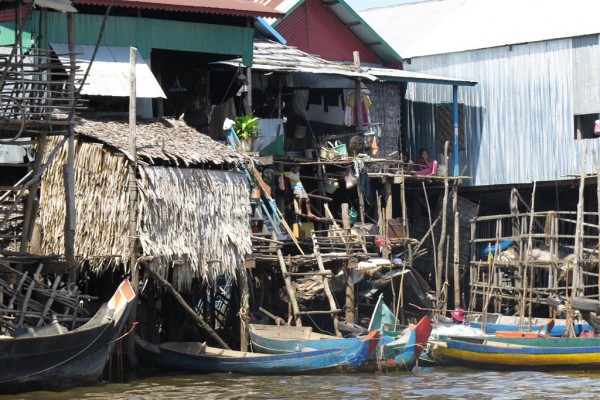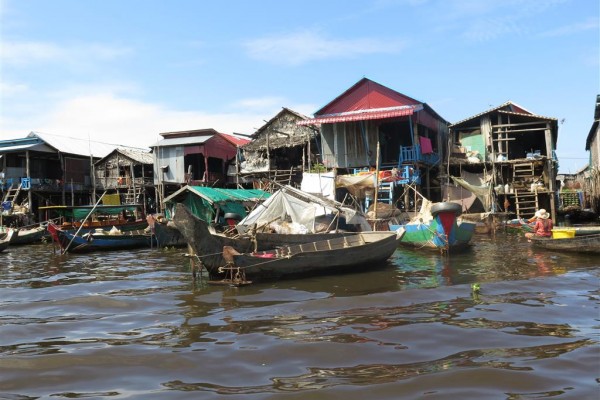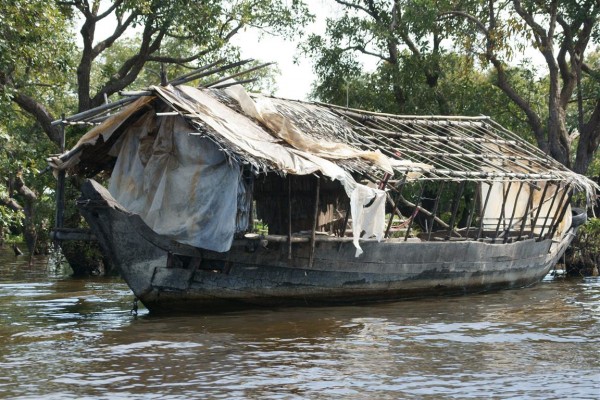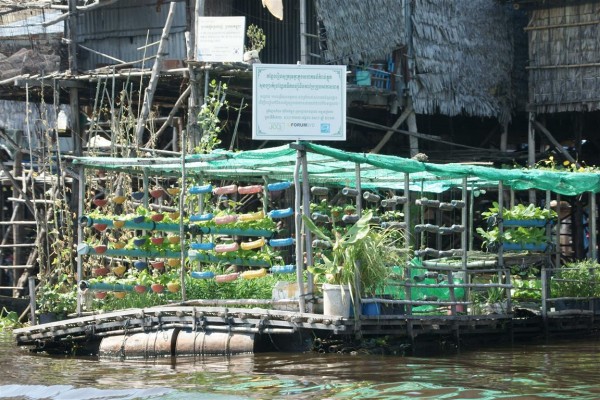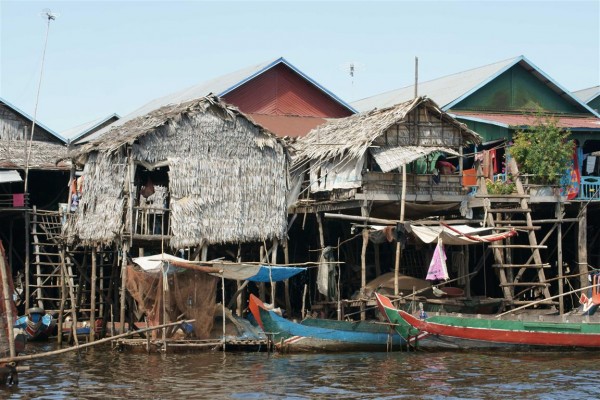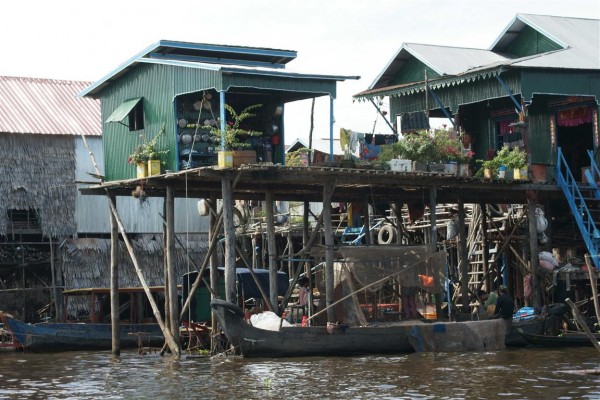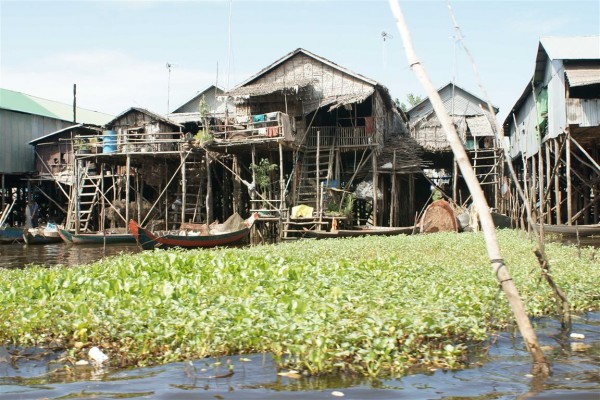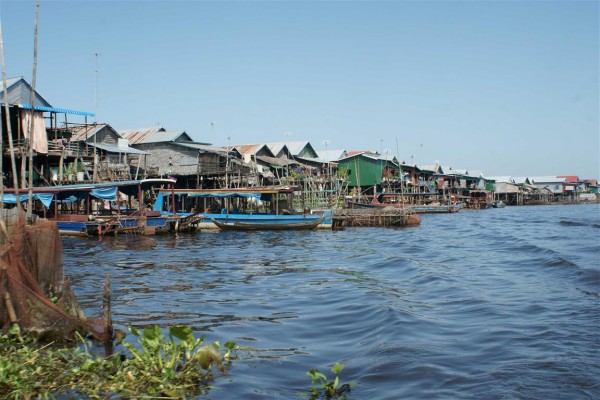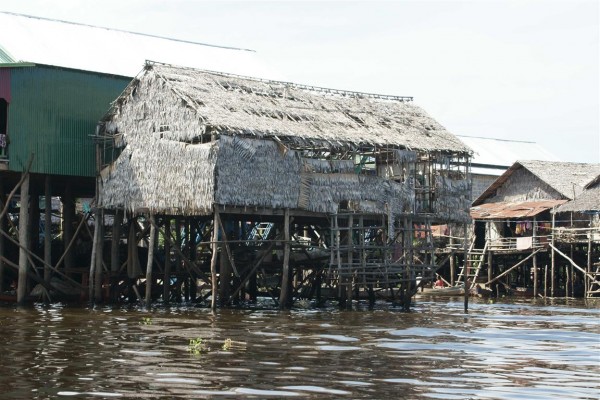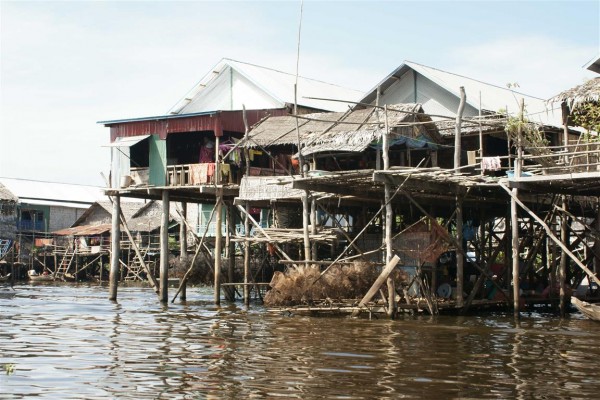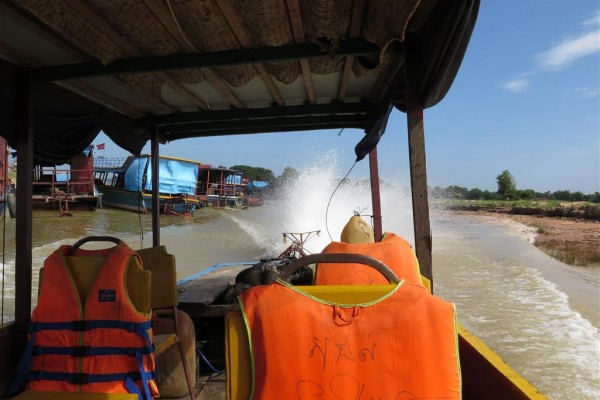Tonle Sap : around November every year, at high water mark, the lake starts to drain into the Tonle Sap river and into the Mekong, The Tonle Sap river reverses flow and drains the lake down to about one third it’s high water size. Then in May or June, due to heavy build up of water in the Mekong, the Tonle Sap river again reverses flow and the lake starts to fill up again. Living on the edge of this lake is not practical. So, why not live in the lake ? With houses on stilts and farms on floating platforms.
En novembre chaque année, au moment des plus hautes eaux, cet immense lac commence à se vider par sa rivière drainante, affluente du Mékong. Ensuite vers le mois de mai ou juin, avec l’accumulation d’énormes quantités d’eau dans le bassin du Mékong, la rivière Tonle Sap change de direction et le lac se remplit à nouveau. Un changement de l’étendue du lac du simple au triple – 2 fois par an. Par conséquent, il n’est pas vraiment possible de vivre sur ces rivages. Donc on vit dans le lac, maisons sur pilotis, exploitations et élevages sur les plates-formes flottantes. Qui dit mieux ?